Plants should look good in the garden, but they should also do good too. Deer grass (
Muhlenbergia rigens)
is a no-brainer: native, adaptable, wildlife food source and shelter. It’s said that the successful sweep of this welcome western United States native can be attributed to Native Americans, who among other things wove its foliage into baskets and storage vessels. While we have only ourselves to blame for the rampant spread of many undesirable plants, deer grass reminds us of humans' good deeds.
The western United States consists of many diverse growing conditions and climates — not all of them the friendliest or easiest to manage. Consider this unthirsty, easygoing native your free pass; it can handle situations from occasional frost and intense sun to drought and seasonal flooding.
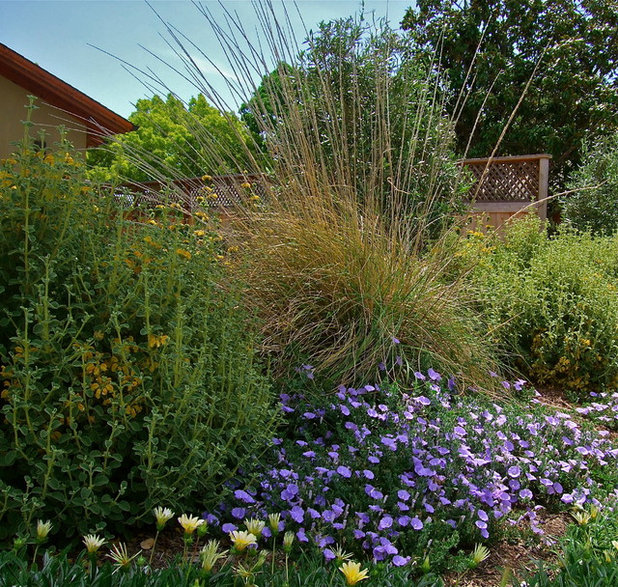
Edger Landscape Design
Botanical name: Muhlenbergia rigensCommon names: Deer grass, deergrass, meadow muhly
USDA zones: 7 to 11 (find your zone); hardy to 15 degrees Fahrenheit
Water requirement: Low once established
Light requirement: Full sun but tolerates some shade
Mature size: 4 to 5 feet tall and wide
Benefits and tolerances: Drought tolerant; provides shelter for wildlife; birds eat seeds; tolerates urban conditions; mature plants are deer resistant
Seasonal interest: Evergreen; silvery plumes project 2 to 3 feet above foliage in summer and fall
When to plant: Plant from nursery pots in fall
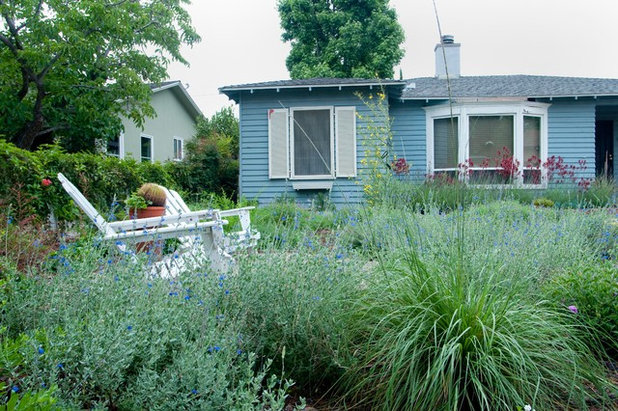
Poetic Plantings
Distinguishing traits. Tired of waiting for your nursery purchases to fill in? Deer grass grows to full size in a couple of growing seasons.
Deer grass is a large, bunching, warm-season grass. It can be mistaken for pampas grass, with its green strappy leaves and silvery floral tufts. But unlike the rampantly invasive pampas grass, we can welcome native deer grass into our gardens with open arms. Some restoration projects throughout the western United States even have deer grass as a replacement for invasive grasses like pampas grass.
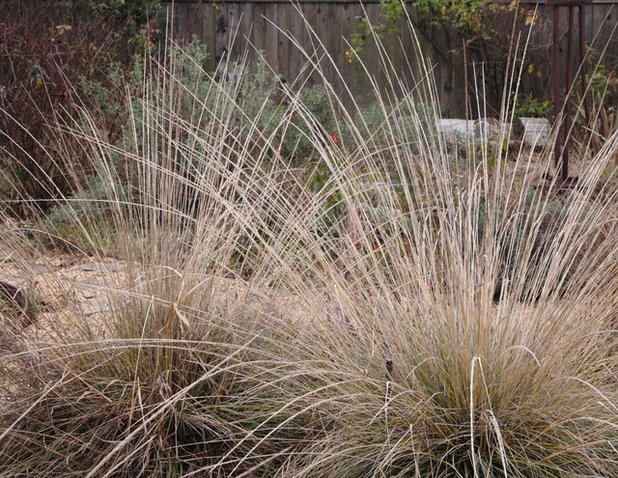
Luciole Design Inc.
Deer grass requires next to no grooming. Leave it up for wildlife through fall and winter and let its golden color illuminate an otherwise dormant garden.
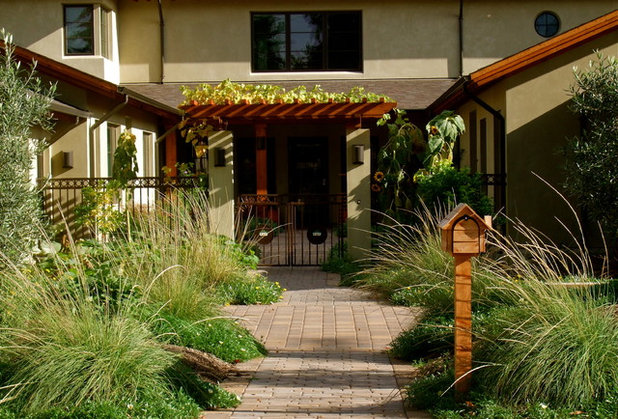
Edger Landscape Design
How to use it. You'd be hard pressed to find ways
not to use deer grass in the garden. It thrives in full sun and well-drained soil, but is fine with some shade and seasonal flooding. Mass deer grass with other flowering natives, especially pollinator attractors, for a soft and meadowy wildlife sanctuary. You'll want to leave plenty of room, at least a few feet between plants, to appreciate deer grass' soft, mounding form once it fills in.
If you prefer something simpler, use deer grass as a specimen. Its breezy texture can also be used to soften architectural succulents and Southwest natives, without making the look too cluttered.
Deer grass is also a garden problem solver. Unstable stream banks and hillsides can benefit from its root system.
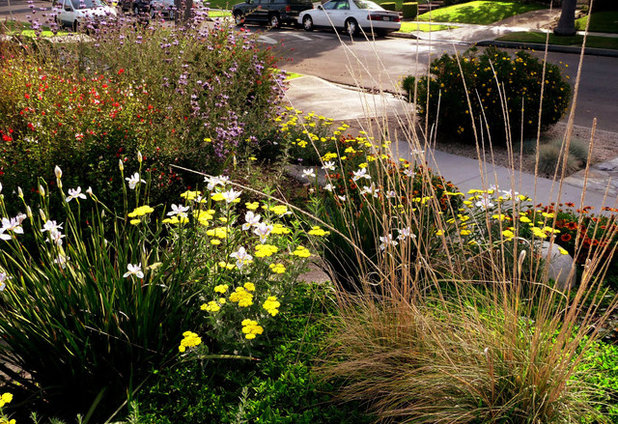
Urban Oasis
Planting notes. Western U.S. natives, though drought tolerant and low maintenance, can be finicky about growing conditions — the right drainage, sun exposure and soil are critical. This is not the case for deer grass, a tolerant and pretty fuss-free grass. Described as very adaptable, deer grass thrives in full sun, even reflected heat, but tolerates some shade.
Found along riparian zones, it tolerates times of dry soil and times of seasonal flooding — just be sure it doesn't stay too wet for too long. To establish, water it regularly. Afterward deer grass can go literally all summer without watering, but it will also do just fine with some summer water. Browning leaves in summer may mean your deer grass is a little thirsty.
Deer grass can be cut back in late winter, just before new growth pushes out, but many suggest that a simple rake-through for dead foliage is all you need. If you do choose to trim and tidy up your grass, wait as long as possible, as many native and beneficial critters overwinter in its foliage.





